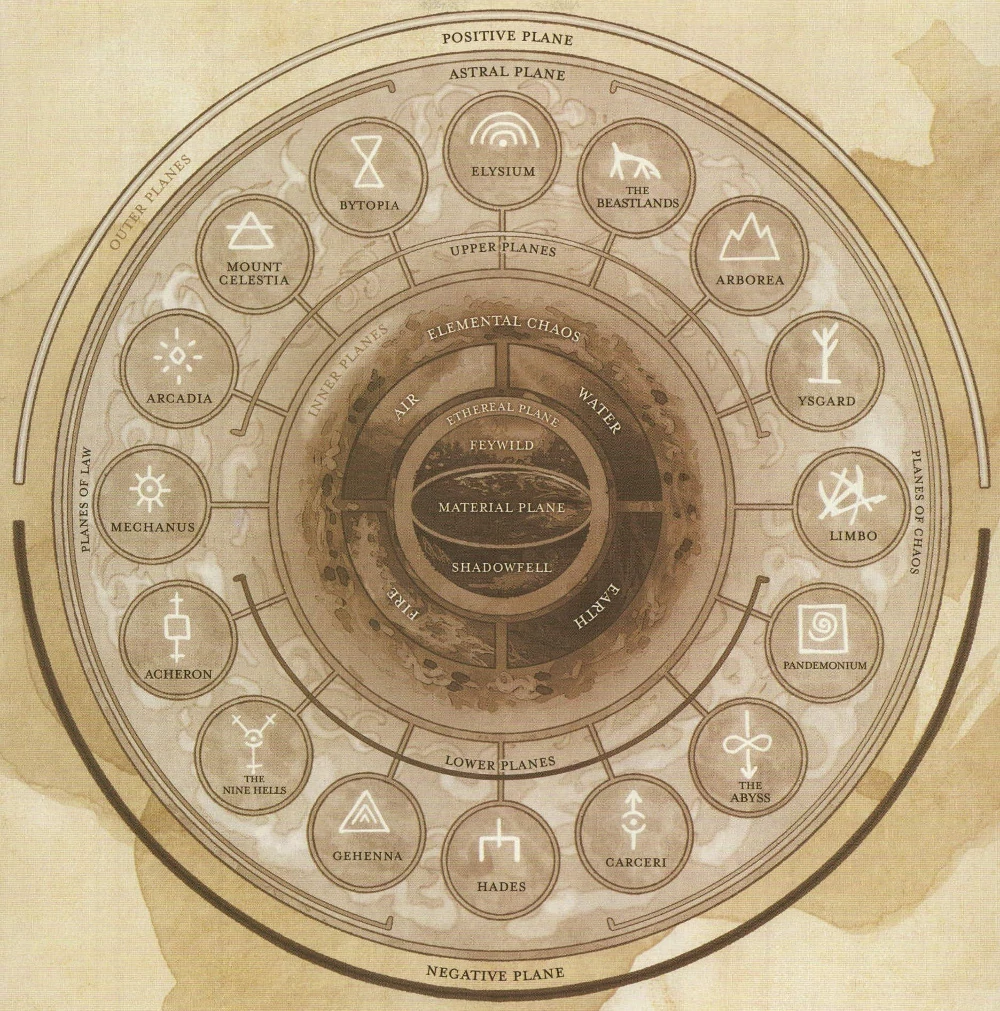Religions of Sefarow
Sefarow is home to many different religions. Some are large enough to have organised clergies, whereas others have only a few followers in the entirety of the continent. This section lists the gods which can be found in the continent of Sefarow, their clergies and practises, and the cosmology of the world of Adaria, as well as the general "rules" that they function under.
Cosmology of Adaria
Adaria
Adaria is the common name given to the planet upon which this campaign setting takes place. It is slightly smaller than real-life Earth, and has an orbit of 240 24-hour days (more information on the calendar found here). Adaria orbits the sun, and has 2 moons orbiting it.
Adaria exists as part of a solar system, consisting of 6 other planets. Some scholars believe that the planets seen in the night sky are the physical version of certain planes of existance. Little is actually known about the worlds beyond the planet of Adaria itself.
Planes of Existance

This setting uses a modifed version of the Forgotten Realms' Great Wheel cosmology when it comes to other planes of existance. This means that the Feywild and Shadowfell, Astral, Ethereal as well as the Elemental, Upper and Lower planes exist within Adaria. Transitive planes such as the Ethereal Plane and Astral Plane serve as the connections between the Prime Material Plane to others, with the Ethereal Plane serving as gate from the Prime Material to Inner Planes and the Astral Sea serving as the gate between the Prime Material and Outer Planes.
The Astral Sea is truly the end of all things; souls both mortal and immortal go there to die. Mortal souls are drawn to the Fugue Plane, where Kelemvor, Judge of the Damned, will ferry them to their appropriate afterlives, whereas immortal souls such as gods simply become physical entities in the neverending void upon death.
Origins of the Gods
The gods of Sefarow (and to a lesser extent, Adaria) are intrinsic parts of the world itself. The gods, as the people of Sefarow know them, are simply the avatars of cosmic forces, faces and names given to concepts to make them easier to understand. The gods of Sefarow are inheritely not human, they are often aloof and ignorant of what happens beyond their domains, and oftentimes aren't truly conscious. While some gods are ancient beyond measure, some have been created within living memory. New gods can spring up from the collective worship of a concept or idea, and sometimes even a person. They change and evolve as the people who worship them do. The gods of Sefarow tend to be neutral; for the most part they are all equally capable of granting both boons and banes.
It is almost impossible to kill a god; they are ideas and forces, if you kill the avatar then all you have acheived is killing the face they wear around mortals. The Gods have no true bodies and exist only physically within their avatars.
The Pantheon
Sefarow's many gods exist in a loose pantheon; they coexist but rarely interact with other gods beyond those who share their domain. The gods do however recognise a loose hierarchy, as each major deity has several minor dieties below them. Generally, the Greater Deities are more broad in their charges while the Lesser Deities are concerned only with a very narrow domain and therefore are less powerful and will always defer to the Greater Deities who share their domain. Lesser Deities are sometimes called "Patrons" by those who worship them, as they represent a very niche force and tend to serve only that niche.
Gods Beyond Sefarow
Sefarow is not the only continent of Adaria. far beyond the confines of Sefarow's islands lie 2 other continents, each with their own gods and belief systems. Many are different interpretations and avatars of the same forces, while others are beings unknown to Sefarans.
![]()